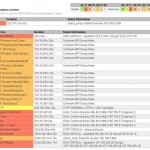Here at Nagios Enterprises we do our best to add new features and components that meet the needs of the community and our customer base. We get new feature requests every week, but sometimes the request is something we’re not able to fulfill in time, or the customer’s need requires a more “home grown” solution to fit the needs of their environment. For that reason, we’ve created some documentation for getting started with Nagios XI Component Development. The document covers some basic concepts in XI component development that would be needed regardless of what the component does, and is intended for development and administrators who are already familiar with programming concepts. This document covers the following topics:
- Example Component Code
- General Developer Guidelines
- Setting Up XI For A Development Environment
- Component Registration and Initialization
- Using The Backend API To Get XML Data
- Adding XI’s CSS and Javascript
This document is available on the Nagios Library.














